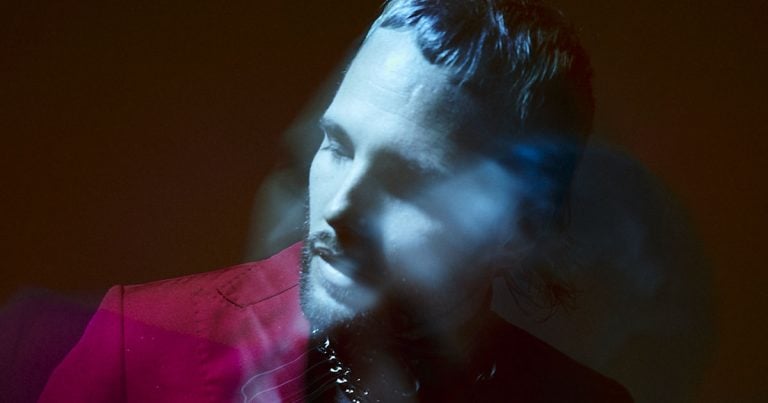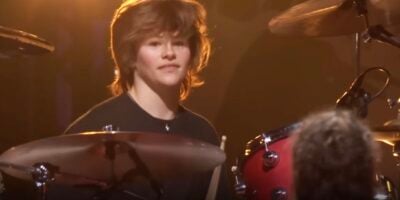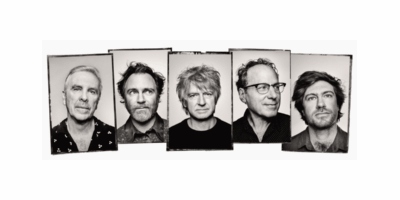What So Not, the musical moniker of enigmatic artist and producer Chris Emerson, is breaking down musical boundaries in more ways than one.
His much-anticipated second studio album, Anomaly, is exactly what it promises: a eclectic mix of genres and techniques brought together in a way that makes categorising it impossible.
Emerson took time off around 2019 to travel the world and experience life again. It was then he started working on the core ideas for Anomaly, planning to release the record in 2020.
“For me, writing it in 2019 it was a very different period of my life, where I’d made the active decision to just go and live again,” he explains. “I was doing 200-250 shows a year for five or six years straight, just relentless. When there’s that much travel most of your life is just on a plane and staring at a hotel wall waiting to go to soundcheck or to stage, and it’s very hard to resonate with reality. I wanted to get back to that very badly, and I did.”
Emerson travelled to Europe, deliberately booking only two shows to cover the costs while he “jumped” from country to country, meeting up with friends and producers he’d befriended online to work in their studios and see what was happening in their part of the world.
“It was people like Petit Biscuit, San Holo, Xplore, Noisia – I even met up with Jammer in the UK,” Emerson says. “Crossing paths with artists that were also on tour, like Anderson .Paak & The Free Nationals, and hanging out with them and seeing their show, going with them when they would jam with the locals at 3AM in the local jazz club in Paris. Just really living, you know?”
Opting to do things outside of his normal comfort zone, Emerson even took up big wave surfing during his journey.
Love Music?
Get your daily dose of metal, rock, indie, pop, and everything else in between.
“That was such a confronting thing that I really think changed the whole way my brain works and thinks and approaches things,” he says. “So it was a very important year for me, and I’m kind of glad I got that in before 2020 hit and of course everything shut down.”
Upon his return to Australia, Emerson received a call from his good friend Daniel Johns, inviting him to come and live in his Newcastle home with some other friends.
“We had the most fantastic creative venture for nine months, just making records solely with the guitars, vocals, analogue and recording drums,” he says. “He’d collected dozens of synths across his life that were all just sitting there ready to be toyed with.”
One of the songs created during that time, ‘Stand ‘em Up’, was released on Johns’ record-breaking solo album, FutureNever. The rest will form part of a project Emerson says the duo will focus on later down the track.
“I’m excited to see where we take that once we’re through our cycles,” he says. “As you can hear by Stand ’em Up, it’s more of a straight up punk rock kind of thing.”
Following his time in Newcastle, Emerson traveled to Western Australia for what was touted as “the first festival back in the world” following the COVID lockdowns.
“I went and did this Castaway Festival at the end of 2020, in November, and from there I was like, ‘Oh, Perth is pretty tight – it doesn’t even know that COVID’s going on,’” he laughs. “So I moved to Perth and Karl (Thomas) – Shockone, who is a really amazing drum’n’bass producer, he’s been set up there his whole life and has this insane studio designed by John Sayers that he and his uncle built.”
Thomas invited Emerson to use the studio any time after 4PM, when he would return home to spend time with his family. It was there, after months of creative expression and exploration, that Emerson was able to refine what eventually became Anomaly.
“It was an opportunity to just sit in a great, well-made, treated room for just months and months on end and I’d never had that opportunity in my whole career,” Emerson explains. “It really helped me elevate my understanding of the extremities that you can push sounds and sonics, and really testing and hearing what they truly sound like.”
Emerson admits there is a danger sometimes of overworking songs, but says a lot of the time the bigger issue is trying to make a song hit a deadline, rather than allowing a song to evolve into what it should be.
“I don’t know if I’ve ever hit such a sweet spot as I have with this album, where I had time to tinker with it as much as I felt necessary,” he says. “I had time to take a lot of space from it and then come back and actually listen to it as a subjective listener.”
Emerson worked remotely with Alex Braithwaite (SUB-human) and Tyler Scott to mix and master the record.
“We did it all over the phone, listening to high quality live recordings as we streamed and mixed it together,” he says. “Tyler did the vocals and a few instruments and Alex mixed and mastered the rest of it with me. It was such an amazing process, I got it really to a spot where I loved where it was at, and then they helped push it that extra 10 per cent that you get with an amazing mix and master.”
Emerson’s collaborations on Anomaly are as eclectic as the music he was listening to as he created it. Whereas he listened to a lot of “classic” records making his debut full-length album, Not All the Beautiful Things, his Euro trip playlist was considerably different.
“I was listening to Spooky Black and Bau and Sebastian Paul and Lil Peep and Underworld and Chemical Brothers and POND and Bicep and M83 – all these kids of acts,” he says. “Sometimes as a music creator you don’t take the time to be a music absorber, and that’s what this trip was for me.
“I was really listening to my peers and artists that I admire, and hearing what they had done in the past that maybe I’d missed, or their most recent work that I’m not always on top of, and it was extremely inspiring to do so.”
The collaborations on Anomaly reflect the eclectic nature of the album. From DMAs to MØ, Enschway to JRM, Phi11a to Oliver Tree, Emerson brought in friends from across the globe to work on the tracks.
‘Mr. Regular’, the track featuring Oliver Tree, made headlines before it’s release when Tree denied all knowledge of the song’s impending release. Emerson laughs about the situation now, neither confirming nor denying rumours of it being a publicity stunt.
“Oliver is a very very complex guy, and I myself can almost never tell what is real and what is not,” he says. “I’ve known him for a very long time now, and he is probably the closest thing that I’ve seen in real life to someone like Andy Kaufman.”
Some of the songs have managed to maintain the same vibe they were created in. The single ‘On Air’ was written in the LA studio of Captain Cuts during kick ons after their Emo Nights residency.
“We went back to their studio in LA, JRM was with us, who’s the vocalist… and everyone was a little toasted, it was probably 3AM by the time this song was about to start,” Emerson recalls. “I think it was Ryan Raven who was challenging me to make something out of some really terrible and ridiculous instruments in the room, so the whole song started with this kid’s toy plastic saxophone or flute kind of thing.”
As Raven started playing around with the toy, Emerson began hearing the song come together.
“[Raven] started playing it and just made a few little noises and from there I heard the initial melodies and counter melodies, chords and the drum rhythm and started putting the whole song together from that,” he laughs. “It was actually JRM’s birthday, so there was a whole cuddly friendly sort of vibe going around the room and everyone was celebrating, everyone was smiling, and I think that’s how the song has that Disney kind of feel to it – it’s just so honest and unpretentious.”
Emerson has previously spoken about the increased output in the music industry, claiming a lot of music from the past decade is going to get “lost”. So with the additional output generated during COVID, when everyone – including Emerson himself – had time to create, has that opinion changed?
“I think that music can no longer be music on its own; it has to be paired with something to stand out,” he says. “Myself, I’ve been going about that by building an entire world of what there is a meaning behind every song, and there is a scene and a setting, and a scene for me in a movie that is going to happen for each record.”
To that end, Anomaly is a concept record, and Emerson has been creating a 3D animated film for around three years, for which this album is the score.
“It’s the soundtrack of the film, so there’s a very deep storyline through this whole album that I’m looking forward to everyone literally being able to see play out,” he says. “It is a story that had some emulation to my own life and my dreams and ambitions, blown out into this post-apocalyptic dystopian future. Funny enough, COVID happened after I’d come up with this idea, and now it seems very very fitting.”


































